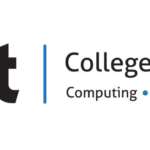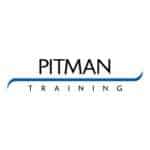Desktop publishing (often abbreviated DTP) is used both by specialists and non-specialists alike, typically as a means of creating visually engaging promotional material. Desktop publishing software can be used to produce, manipulate or re-arrange images and text so that the user can put together attractive layouts across a range of printed and electronic material. For instance, DTP documents may be used for desktop or commercial printing, or for electronic distribution (including PDF files, slide shows, email newsletters, e-publications and websites).
What does desktop publishing involve
A part-time certificate-level course in desktop publishing (FETAC Level 5) is a good place to get started in picking up the basics of DTP practices. Course participants will receive training in using the industry-standard DTP software, Adobe InDesign, through which they will then be able to layout and produce quality printed material (e. g. posters, flyers and newsletters). Learners may also avail of a flexible learning option, which allow them to study at their own pace as they are given training in creating text boxes, formatting, navigating multi-page publications, using rulers and ruler guides and inserting headers and footers. Prospective students should note, however, that while the course is for beginners, basic computer skills are required.
There are also lengthier desktop publishing courses for beginners looking for more comprehensive training, some of which will provide instruction in using the four main Adobe programmes: InDesign, Illustrator, Photoshop and Acrobrat. This training will cover the technical aspects of document design, layout and colour and so will allow users to achieve their branding and advertising objectives. To this end, such extensive DTP programmes are ideal for those involved in the preparation of marketing materials (e. g. those working within small businesses or those employed in the areas of publishing or marketing).
A part-time diploma in desktop publishing is another excellent study option. Participants on a diploma course will receive thorough training in the aforementioned areas and will gain plenty of practical graphic design experience by undertaking assignments and projects. Students on a diploma-level programme will also be given training in designing content across multiple platforms including mobile devices such as smartphones and tablets. It is recommended that applicants bring a memory stick to class in order to save their work. While the programme is designed to cater for design and desktop publishing novices, having a good working knowledge of computers is still a prerequisite.
Why do it
Whether you are self-employed or working within a small organisation, being able to produce high-quality marketing material is vital for promoting your services, communicating with clients and customers, and establishing brand awareness. Part-time courses in Desktop Publishing are designed to allow participants meet these needs.
What comes next
Those with well-developed desktop publishing skills may go on to work as designers or marketers; however, many students on desktop publishing courses tend to either be self-employed or work for smaller companies. Having desktop publishing training allows them to cut considerable marketing expenses by allowing them to produce their own material. While the quality of the end product largely comes down to the level of training and creative ability that an individual possesses, having even a basic understanding of DTP principles will confer course graduates with significant advantages and independence.
At a glance
A FETAC Level 5 Desktop Publishing course will run for around 5 months. The part-time Diploma in Desktop Publishing can run for 12 to 14 weeks.















